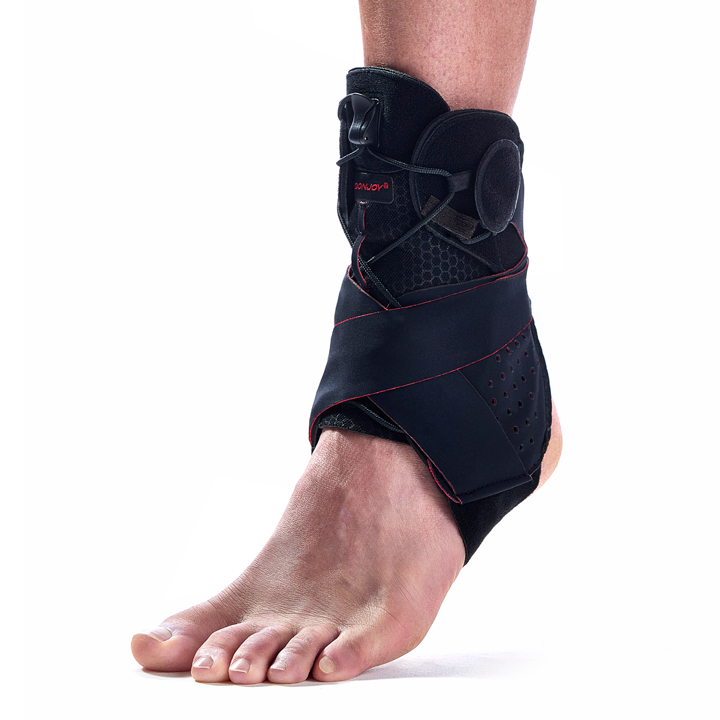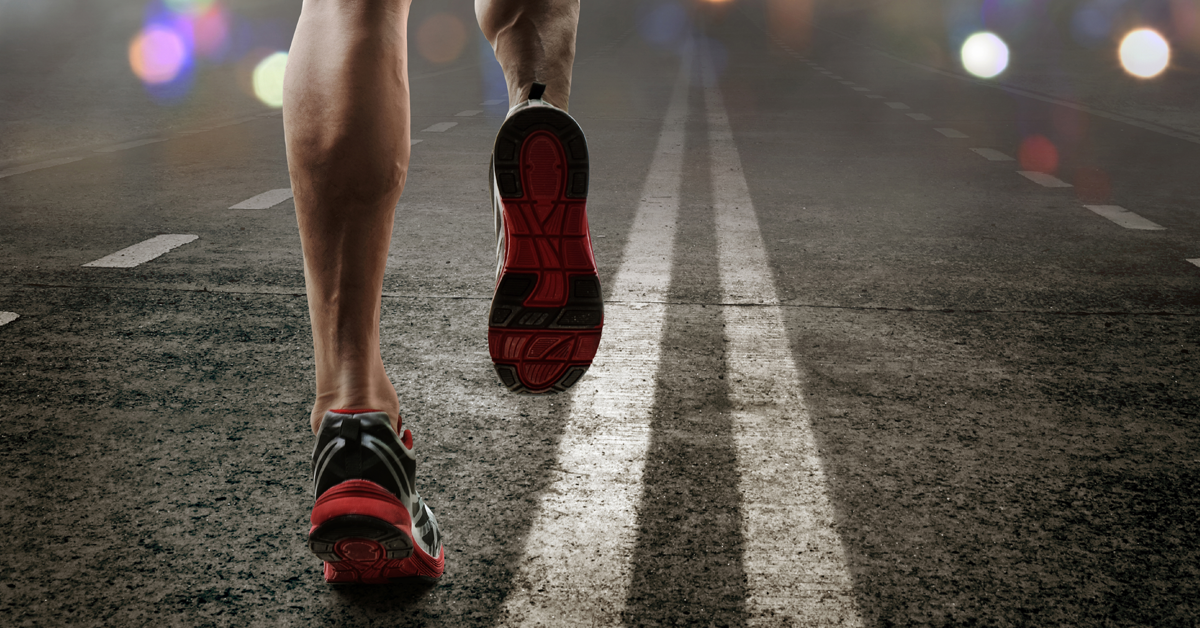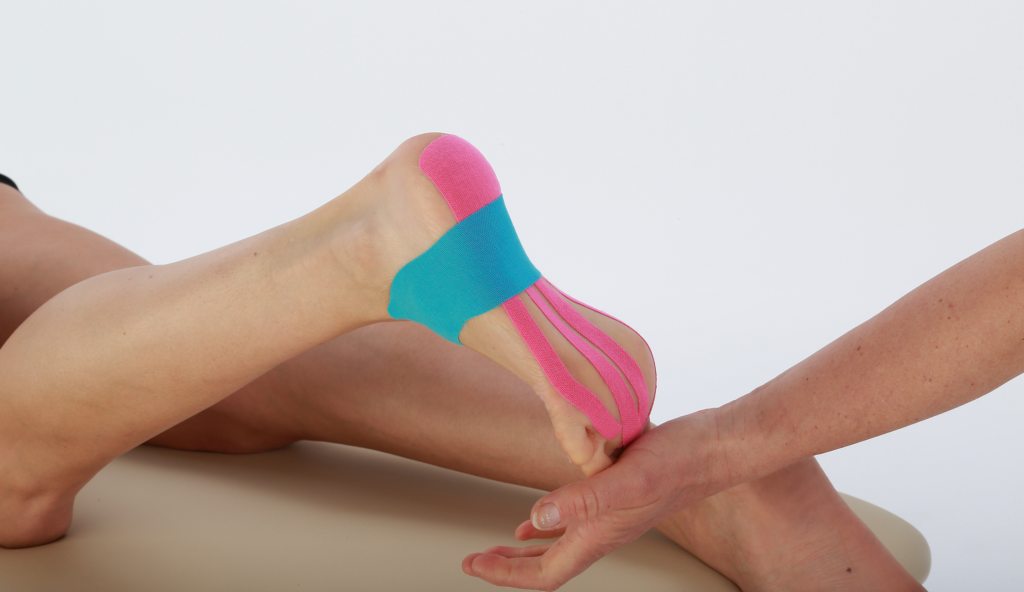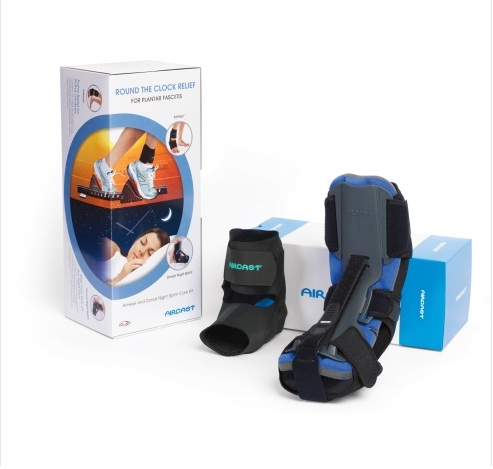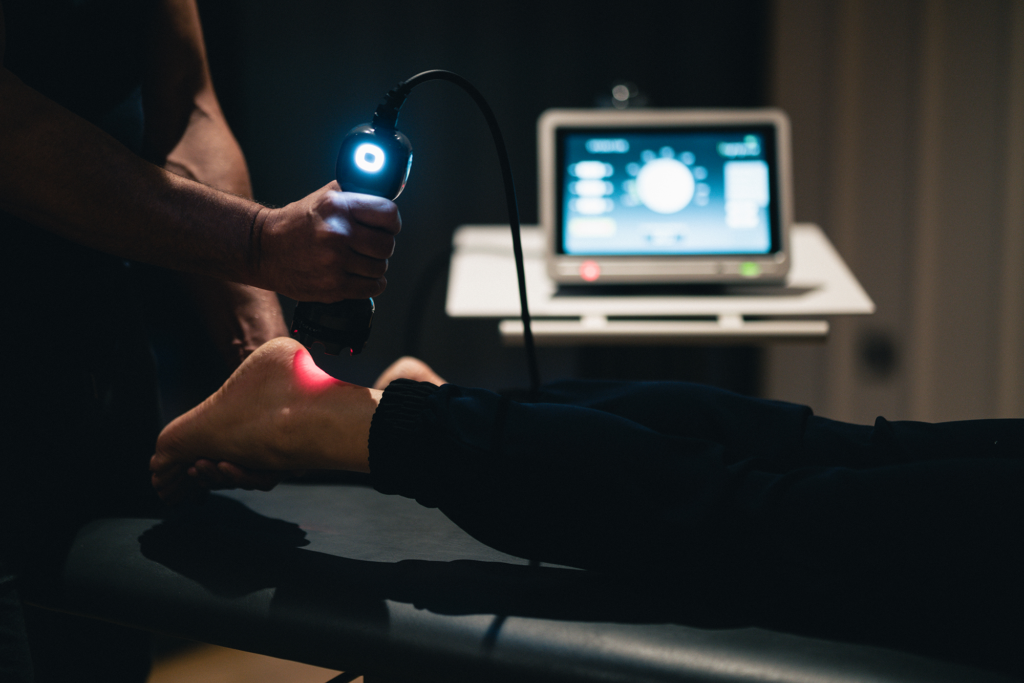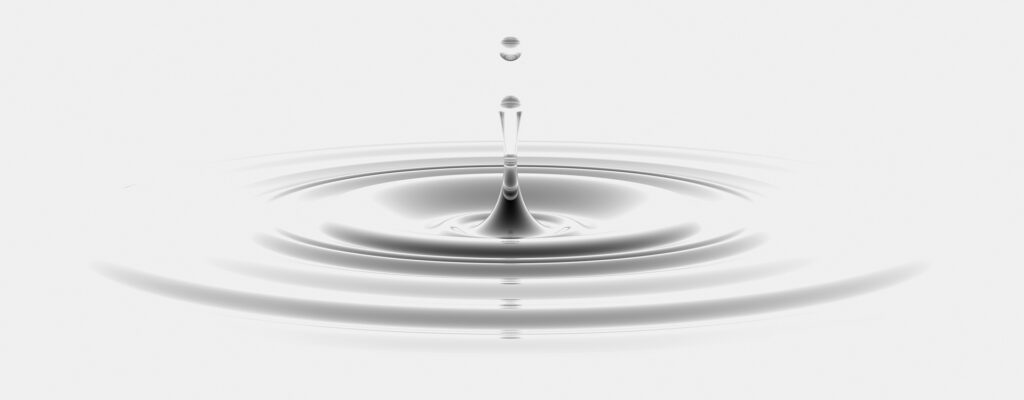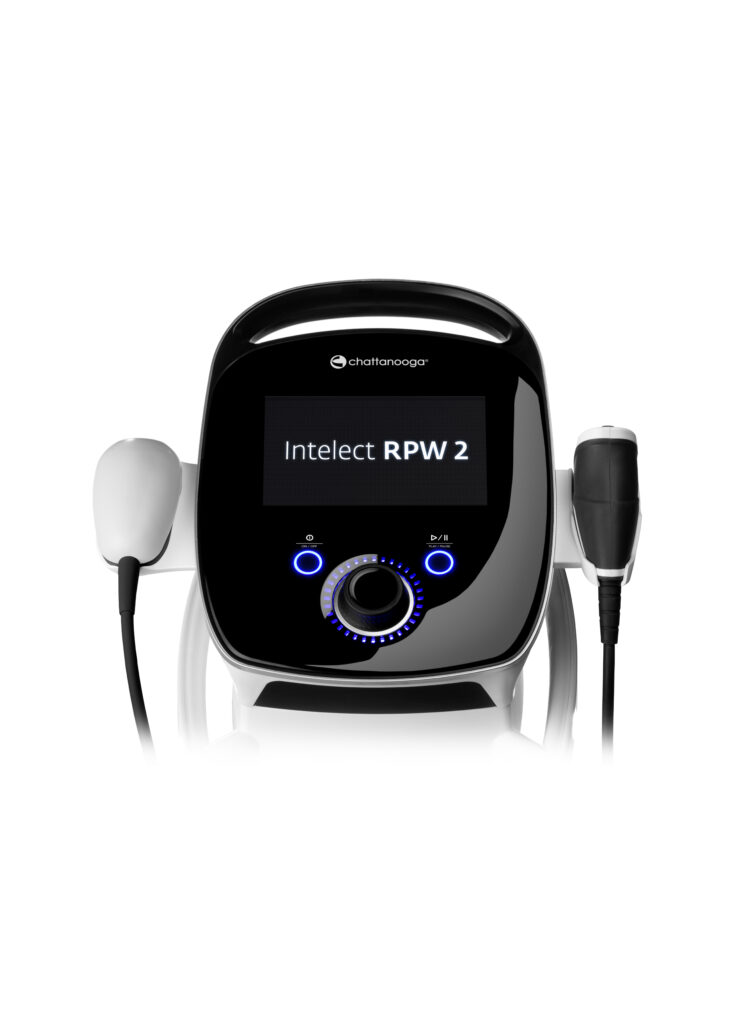Lateral ankle sprains are one of the most common sports-related injuries1; in the United States alone, more than 23,000 people suffer a lateral ankle sprain every day.2 To help address this situation, DonJoy® introduces the new DonJoy ActyLight®, an ankle support so comfortable and easy to fit, you’ll forget you’re even wearing it.
What is an ankle sprain, and why do they happen?
When the ligaments of the ankle are damaged, this is called a sprain. If the foot suddenly rolls inward during activity, the subsequent forceful ankle plantarflexion and inversion can result in stretching and tearing of the ankle ligament fibers. As well as causing swelling and bruising, sprains are usually painful, especially when the person attempts to put weight on the foot.
Ankle sprains are categorized into three grades of severity:
- Grade I (Mild): This involves minor stretching and tiny tears in the ligament fibers, leading to mild tenderness and swelling around the ankle.
- Grade II (Moderate): In this grade, there is partial tearing of the ligament, resulting in moderate tenderness and swelling around the ankle. Certain movements can cause some abnormal looseness in the ankle joint.
- Grade III (Severe): This is the most severe grade, where the ligament is completely torn. It leads to significant tenderness and swelling around the ankle, and certain movements can cause substantial instability in the ankle joint.
What is chronic ankle instability?
Approximately 40% of individuals who suffer an ankle sprain later develop chronic ankle instability (CAI) and report persistent symptoms.3,4 This condition is marked by sensations or instances of the ankle unexpectedly giving way.5
People with CAI commonly experience ongoing symptoms such as persistent swelling, pain, weakness, restricted ankle movement, instability, reduced self-reported functionality, and recurrent ankle sprains.5,6
CAI has been recognized as a precursor to ankle osteoarthritis (OA), with its onset typically happening a decade earlier than knee or hip OA.7
Chronic ankle sprains might necessitate surgical intervention through arthroscopic ligament reconstruction. Individuals with CAI are noted to exhibit both mechanical instability, related to structural changes around the ankle, and functional instability, which is associated with decreased sensorimotor and neuromuscular control.8
Bracing for chronic ankle instability
An ankle brace is worn to support and stabilize the ankle, either as a preventive measure or after an injury has occurred. These braces come in soft or semi-rigid varieties and are intended for one or more of the following purposes:
- Improve ankle stiffness and thus mechanical stability9
- Improve neuromuscular control10
- Improve grounding of the foot10
- Decrease excessive range of motion (ROM)9
- Enhance proprioceptive acuity (the body’s ability to sense its own location, movement, and actions)11
Numerous clinical studies have been conducted to assess the effectiveness of ankle bracing in these areas.
In 1998, Vaes et al. discovered that the Aircast® Air-Stirrup® brace significantly reduced talar tilt in unstable ankles during static and dynamic tests, and it slowed down the simulated sprain speed.12
In a study from 2000, Hals et al. demonstrated a significant enhancement in shuttle-run performance among subjects with post-acute, mechanically stable yet functionally unstable ankle sprains when using the Aircast Sport Stirrup® brace.13
A randomized controlled trial conducted by Janssen et al. in 2014, involving 384 athletes who had experienced a lateral ankle sprain, revealed that using an Aircast A60™ brace was more effective than neuromuscular training in reducing the recurrence of ankle sprains.14
Habadi et al. (2014) showed the advantages of soft and semi-rigid ankle orthoses in improving the dynamic balance of individuals with functional ankle instability.15
And a 2020 systematic review by Reyburn and Powden concluded that the current body of research strongly supports the positive impact of ankle braces on the dynamic balance of individuals with CAI.16
Introducing ActyLight by DonJoy®: fit-and-forget ankle support
The convenience and comfort of the DonJoy ActyLight® ankle support means patients will forget they’re even wearing it.
Designed to deliver stability and protection for mild to moderate lateral ankle sprains, thanks to its removable bilateral stays, quick lace-locking mechanism, and step-in design, this modular brace can also be used for the prevention of ankle injuries.
All of this means that patients can rely on ActyLight throughout their journey of activity, from healthy, active use, to support following injury, and to prevention of reinjury in the future.
To find out more about DonJoy ActyLight, go to enovis-medtech.eu.
References
- Fong, D.T.P., Hong, Y., Chan, L.K., Yung, P.S.H. and Chan, K.M., (2007). A systematic review on ankle injury and ankle sprain in sports. Sports medicine, 37(1), pp.73-94.
- Hubbard, T.J. and Wikstrom, E.A., (2010). Ankle sprain: pathophysiology, predisposing factors, and management strategies. Open Access Journal of Sports Medicine, 1, p.115.
- Anandacoomarasamy, A. & Barnsley, L. (2005). Long term outcomes of inversion ankle injuries. Br J Sports Med, 39(3): e14; discussion e14.
- Konradsen L., Bech L., Ehrenbjerg M. & Nickelsen T. (2002). Seven years follow-up after ankle inversion trauma. Scand J Med Sci Sports, 12(3): 129-135.
- Hertel, J. & Corbett, R.O. (2019). An updated model of chronic ankle instability. Journal of athletic training, 54(6): 572-588.
- Ahn, C. S., Kim, H. S., & Kim, M. C. (2011). The Effect of the EMG Activity of the Lower Leg with Dynamic Balance of the Recreational Athletes. The Journal of Physical Therapy Science. 579–583.
- Saltzman, C.L., Zimmerman, M.B., O’Rourke, M., Brown, T.D., Buckwalter, J.A. & Johnston, R. (2006). Impact of comorbidities on the measurement of health in patients with ankle osteoarthritis. J Bone Joint Surg Am., 88(11): 2366-2372.
- Hertel, J., (2002). Functional anatomy, pathomechanics, and pathophysiology of lateral ankle instability. Journal of athletic training, 37(4): 364.
- Zinder, S.M., Granata, K.P., Shultz, S.J. & Gansneder, B.M. (2009). Ankle bracing and the neuromuscular factors influencing joint stiffness. Journal of Athletic Training, 44(4): 363-369.
- Kobayashi, T., Saka, M., Suzuki, E., Yamazaki, N., Suzukawa, M., Akaike, A., Shimizu, K. & Gamada, K. (2014). The effects of a semi-rigid brace or taping on talocrural and subtalar kinematics in chronic ankle instability. Foot & Ankle Specialist, 7(6): 471-477.
- Raymond, J., Nicholson, L.L., Hiller, C.E. & Refshauge, K.M. (2012). The effect of ankle taping or bracing on proprioception in functional ankle instability: a systematic review and meta-analysis. Journal of Science and Medicine in Sport, 15(5): 386-392.
- Vaes, P. H., Duquet, W., Casteleyn, P. P., Handelberg, F., & Opdecam, P. (1998). Static and dynamic roentgenographic analysis of ankle stability in braced and nonbraced stable and functionally unstable ankles. The American journal of sports medicine, 26(5): 692–702.
- Hals, T. M., Sitler, M. R., & Mattacola, C. G. (2000). Effect of a semi-rigid ankle stabilizer on performance in persons with functional ankle instability. The Journal of orthopaedic and sports physical therapy, 30(9), 552–556.
- Janssen, K. W., van Mechelen, W., & Verhagen, E. A. (2014). Bracing superior to neuromuscular training for the prevention of self-reported recurrent ankle sprains: a three-arm randomised controlled trial. British journal of sports medicine, 48(16): 1235–1239.
- Hadadi, M., Mousavi, M. E., Fardipour, S., Vameghi, R., & Mazaheri, M. (2014). Effect of soft and semirigid ankle orthoses on Star Excursion Balance Test performance in patients with functional ankle instability. Journal of science and medicine in sport, 17(4): 430–433.
- Reyburn, R. J., & Powden, C. J. (2020). Dynamic Balance Measures in Healthy and Chronic Ankle Instability Participants While Wearing Ankle Braces: Systematic Review With Meta-Analysis. Journal of sport rehabilitation, 30(4): 660–667.


